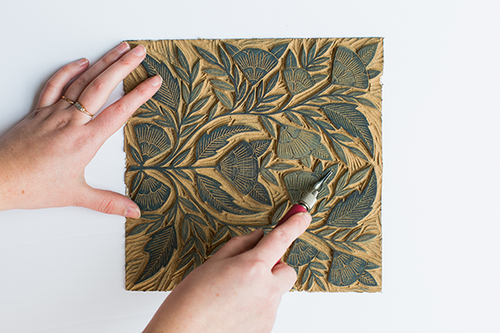While in Siem Reap I did my second textile visit of the trip, to the Institute for Khmer Traditional Textiles, or IKTT. The center was started in 1996 by Kikuo Morimoto, a Japanese man who had studied Cambodian weaving and wanted to preserve the dying tradition. Since so many weavers were killed during the Khmer Rouge, Morimoto found a handful of people who could still remember the tradition to pass it on to others. Today, they have over 500 workers growing silk and weaving traditional Khmer ikat patterns.
The silks were incredible, with more color and detail than I have ever seen. They use all natural dyes and are beginning to grow silk in Cambodia again, rather than importing it from Vietnam. The weaving center is so highly regarded, and such an excellent place to work, that they have over 100 weavers on a waiting list wanting to join.
If I could have, I would have loaded up a suitcase with these beautiful silks, but the prices definitely reflect the ethos behind the company, which has started schools and medical centers for the weavers. Large scarves were around $800 USD, with single-color small scarves starting around $120 USD. The prices were definitely meant for high-end collectors, and not for the tourist market. The work they are doing at IKTT is incredible, with a focus on quality and innovation rather than mass-production, which we have seen in so many other places. I hope that there continues to be a market for these high-end pieces, but that some day Khmer ikat can be revived to a point to make the prices competitive, and replace the "Made in China" pieces that are being sold in markets today.
On a side note: if you would like to learn more about the Khmer Rouge, and what it was like growing up during that horrific time, I highly recommend reading First They Killed My Father by Loung Ung. It's a page-turner, written from a child's perspective about what it was like to go from living in an upper-middle class urban family to four years of torture, slavery and starvation. If you didn't study the Khmer Rouge in school (which most people don't, despite it being one of the deadliest genocides in history), give this book a read.


